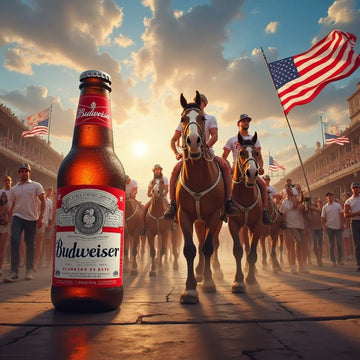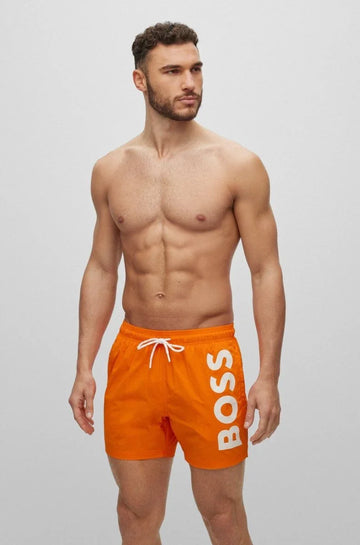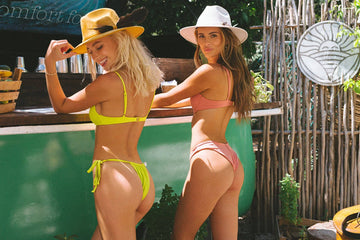
Snippet: Discover how Heineken’s rich German roots fueled its rise into a global beer legend, now intriguingly intersecting with the niche world of rash guards. It’s a tale of brewing mastery, savvy marketing, and cultural blending unlike any other.
Introduction to Heineken
Let’s start at the very beginning, shall we? The Heineken story begins in 1864, when Gerard Adriaan Heineken took a leap of faith and bought the De Hooiberg brewery in Amsterdam, not Germany as often misremembered. But it’s easy to see where confusion arises—the brewery’s methods and quality standards were distinctly European, drawing from centuries-old German brewing traditions. Over time, Heineken evolved from a modest Dutch brewery into one of the most recognizable global beer brands, thanks to a blend of innovation and tradition. By the way, knowing the history of Heineken brewery roots helps you appreciate exactly how implicit the company’s respect for craftsmanship has always been.
What makes the Heineken founder story fascinating is that everything hinged on Gerard’s visionary decision to emphasize quality and consistency. He introduced techniques that made the beer smooth and accessible, aiming for a universal appeal without sacrificing character. And honestly, who doesn’t appreciate a drink that delivers both flavor and familiarity?
Heineken’s Expansion Beyond Germany
Now, you might ask: how did Heineken become global, starting from a single brewery in Europe? The answer: aggressive international expansion combined with smart branding. Even if Germany wasn’t the birthplace, much of Heineken’s brewing inspiration draws on German methods like careful malt selection and fermentation control.
By the early 20th century, Heineken was exporting beyond Dutch borders. The company progressively entered markets across Europe, the Americas, and Asia. Heineken export countries now span over 190 nations, a testament to strategic foresight and adaptability. A huge part of this was leveraging local tastes while staying true to the brand’s core: a crisp, refreshing lager with signature green bottles.
But here’s an interesting twist — Heineken didn’t just export beer; it exported an ethos. The global brand symbolized reliability, high standards, and a cosmopolitan vibe, which made it especially appealing in markets hungry for Western lifestyle icons.
Heineken and the Rash Guards Culture
Wait, what? Heineken and rash guards? At first glance, these two seem worlds apart—one’s a beverage giant, the other a niche apparel choice popular with surfers, MMA fighters, and outdoor enthusiasts. But here’s the thing: modern branding thrives on cultural overlaps and lifestyle connections.
Enter the rash guards niche—a vibrant scene where style meets function. It’s all about durability, comfort, and standout design. Heineken’s iconic logo and aesthetic lend themselves surprisingly well to this space, tapping into a crowd that values both global cachet and individual expression. That’s why you’ll find Heineken-inspired rash guards alongside other famed beverage labels like Fourth of July Rash Guard, Blue Moon Blossom Rash Guard, Bud Light Fourth of July Rash Guard, Belvedere Fourth of July Rash Guard, and the Budweiser Blossom Rash Guard.
Beyond the obvious brand recognition, there’s a deeper resonance: both Heineken and rash guards emphasize endurance and lifestyle flair. The brewery’s history of consistent quality matches the rash guards’ reputation for protection and durability. Put simply, it’s not just a piece of clothing; it’s a statement informed by global culture.
The Brewing Process: German Roots and Modern Techniques
Peeling back the curtain on how Heineken crafts its famous lager reveals a solid marriage of old-school traditions and modern innovations. Starting with the choice of malt and hops, inspired partly by German brewing finesse, the process ensures every pint hits the same mark.
Heineken’s brewing process centers on top-quality ingredients: pure water, malted barley, a special Heineken yeast strain, and aromatic hops. The yeast, in particular, is a guarded treasure—propagated consistently since the early days, it imparts that unmistakable crispness.
Unusually, the beer is brewed with a slow fermentation method at low temperatures, borrowed from Lager styles prevalent in Germany, ensuring smoothness and clarity. This painstakingly monitored approach melds tradition with scientific precision—let’s call it brewing with an engineer’s mindset married to an artist’s passion.
Interestingly, the company’s state-of-the-art breweries still echo the design principles of those original German techniques but enhanced with automation and quality control tech that keep every batch consistent worldwide. That’s no small feat when exporting beer to over 190 countries, trust me.
Marketing Strategies That Made Heineken Global
Here’s where things get really fascinating. Heineken’s rise to a global household name owes a great deal to its meticulously crafted marketing strategy, which, frankly, deserves applause.
First off, the company mastered the art of positioning—a smooth, approachable premium lager that never feels stuck-up. Their advertising campaigns, often crisp, witty, and inclusive, have been pioneering. Take the “Open Your World” slogan: it’s not just a line; it’s an invitation to share experiences and diversity, aligning the brand with human connection rather than mere product features.
Beyond slogans, Heineken leveraged sports sponsorships extensively. They became a mainstay at UEFA Champions League events and Formula 1 races, turning beer consumption into shared celebration moments on a global scale. This sports linkage doesn’t just boost visibility; it cements cultural relevance with millions of fans worldwide.
Social media savvy and experiential marketing also play their part. Thoughtful campaigns such as inviting consumers to virtual tastings or exclusive events create brand loyalty. The uptick in limited-edition packaging and collaborations with artists or apparel producers is a nod to evolving trends without losing the brand’s classic identity.
| Marketing Approach | Key Strengths | Potential Pitfalls |
|---|---|---|
| Global Sports Sponsorships | Massive brand visibility, association with excitement | High cost, may alienate non-sports fans |
| Consistent Quality Messaging | Builds trust, reinforces premium positioning | Risk of seeming less edgy to youth demographics |
| Limited Edition Merchandise (e.g., rash guards) | Engages niche markets, freshens image | Over-saturation can dilute exclusivity |
Heineken’s Role in International Events and Sponsorships
If you’re ever watched a big sporting event, chances are you’ve spotted that green bottle glare—a Heineken fixture. But the beer giant doesn’t stop at mere visibility; it crafts immersive experiences around events. Whether it’s sponsoring UEFA Champions League or partnering with music festivals, Heineken practices what I’d call “celebration marketing.”
These sponsorships serve dual purposes: fueling brand awareness and embedding the product within social rituals. Attendees associate the joy of shared moments—victories, music, camaraderie—with Heineken. It’s clever, almost hypnotic brand association without overt selling.
And speaking of international expansion, this strategy dovetails perfectly. Each event becomes an opportunity to plant the seed for cultural acceptance in markets ranging from Asia to Latin America. Heineken beer worldwide benefits immensely from this approach, weaving local flavors with global branding sensibilities.
Challenges and Controversies
Of course, no global giant sails without turbulence. Heineken, despite its stellar reputation, has faced a share of hurdles and controversies over the decades. From allegations tied to marketing ethics to challenges posed by shifting consumption trends (hello, craft beer revolution), the company’s resilience is tested continually.
One thorny issue has been navigating advertising regulations that vary drastically across countries. Heineken’s sponsorship of alcohol in sports has raised eyebrows in regions sensitive to public health messaging. The balancing act between promotion and responsibility remains delicate.
Moreover, critics sometimes question whether Heineken’s global spread dilutes the authentic brewing nuances that defined its origins. This tension between mass production and artisanal quality is a narrative many large brewers face, and Heineken is no exception.
Future Outlook for Heineken & Rash Guards Niche
Now, gazing into the near future, what lies ahead for this fascinating combo of Heineken’s brewing legacy and the rash guards niche? Honestly, it’s a fine example of brand evolution meeting lifestyle trends.
While Heineken continues to innovate within the brewing landscape—experimenting with low-alcohol variants, eco-conscious packaging, and digital marketing—the rash guards collaboration signals a broader lifestyle pivot. By blending beer culture with activewear, Heineken extends its reach into markets where consumers prize experience and identity just as much as taste.
- Pros: Expands Heineken’s appeal beyond traditional drinkers, taps into fashion-conscious demographics, solidifies cultural relevance outside bars.
- Cons: Risk of brand dilution if not carefully managed, potential confusion among core beer consumers.
Whether you’re a Heineken enthusiast or a rash guard aficionado, this crossover emphasizes how adaptable and influential brands can become. It’s savvy business with a splash of fun—and ethos.
Conclusion
So, what’s the takeaway from the Heineken story 2025? It’s a remarkable journey from a single European brewery influenced by German traditions to a global brand synonymous with quality and celebration. Along the way, Heineken didn’t just rest on its laurels; it embraced bold marketing moves, cultural sponsorships, and even stepped unexpectedly into lifestyle arenas like rash guards.
This synergy between beer culture and activewear niche is a fresh chapter in Heineken’s ongoing narrative, proving that heritage brands can still surprise by connecting with new audiences in original, meaningful ways.
If you want to explore the unique world where Heineken meets rash guards, check out standout pieces such as the Fourth of July Rash Guard, the Bud Light Fourth of July Rash Guard, and the Belvedere Fourth of July Rash Guard. These designs celebrate more than just style – they pay homage to a worldwide culture of enjoyment and resilience.
Here’s to Heineken’s fascinating story—and the many ways it continues to inspire beyond the bottle.
Updated: 06-10-2025



